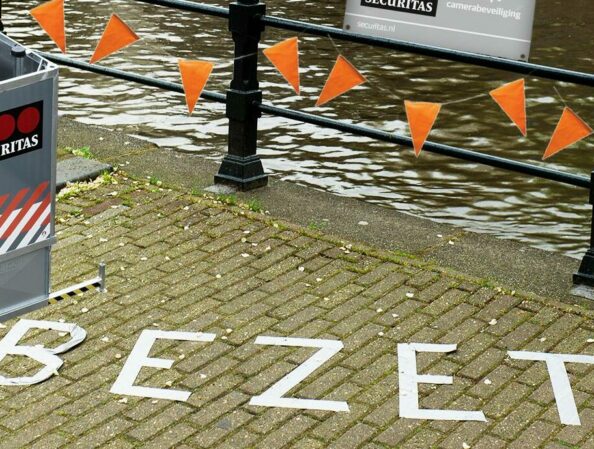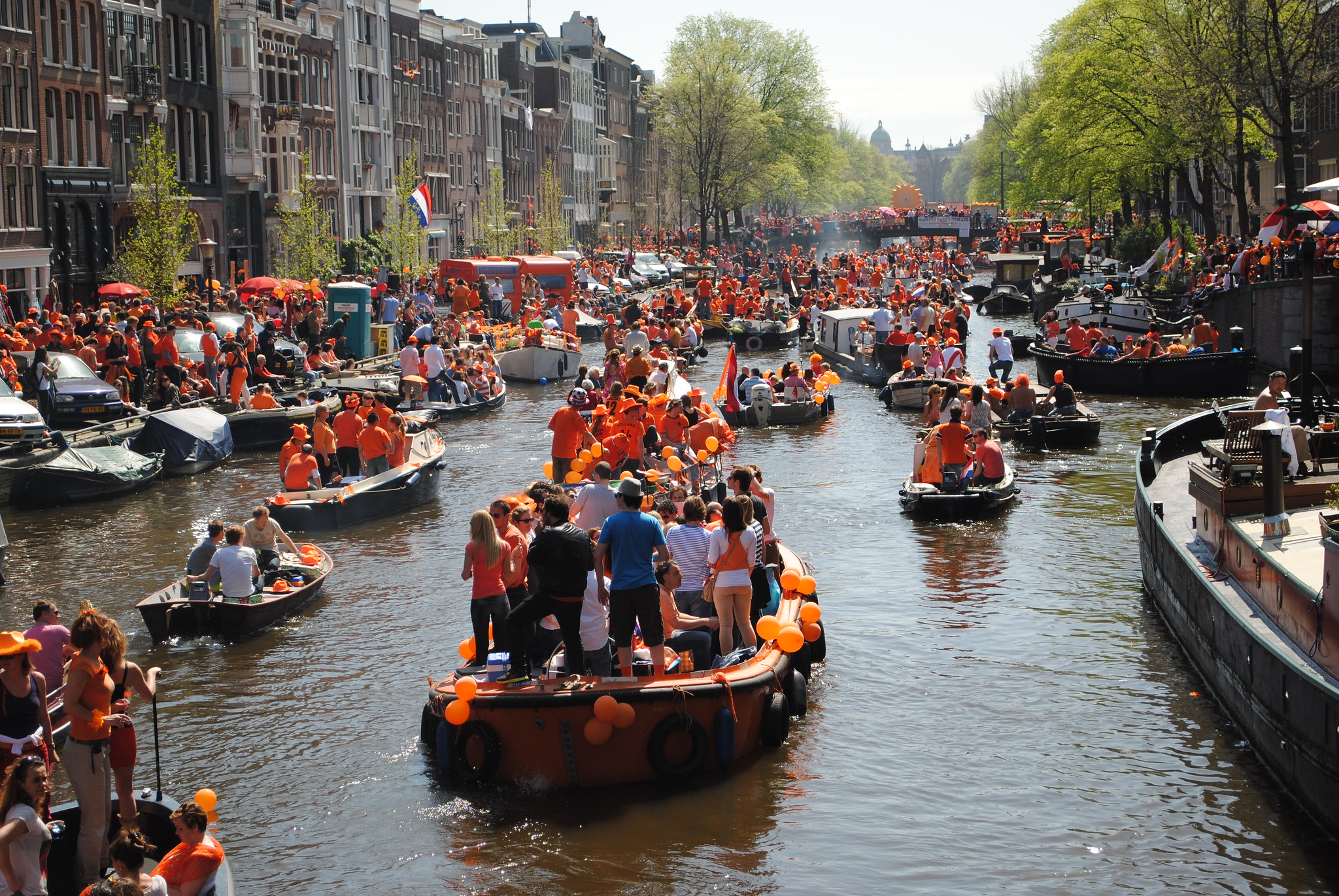On April 27, the whole Netherlands will turn orange: it’s King’s Day! This national holiday is not only very gezellig, but also raises a number of important questions, such as: where does the colour orange come from? Why does everyone sell second hand stuff on the street? How do you eat an orange tompouce without getting a lot of pastry cream and icing in your face?
We’ll answer these pressing issues in this blog, so you can start this day well prepared and informed.
When did it all start?
King’s Day once started as Princess Day on August 31, 1885, the fifth birthday of Princess Wilhelmina. The initiative was taken by a Utrecht newspaper, that wanted to emphasize national unity. Since then, her birthday has been celebrated annually as a holiday for children under the name ‘Queen’s Day’ – Wilhelmina became queen at the age of eighteen.
When Wilhelmina abdicated in 1948, Queen’s Day was moved to April 30, the birthday of her successor (and daughter) Juliana. This date didn’t change when she was succeeded by Beatrix in 1980, but after the current king Willem-Alexander took over in 2013, it did move to his birthday: April 27. Since then it has been called King’s Day, as he is, well, a king.
What was wrong with Beaxtrix’ birthday?
She decided not to move the holiday to her birthday, as ‘a tribute to her mother’ – but the fact that her birthday is on January 31 and it’s not super comfortable to spend all day in the freezing cold at a flea market, might also have played a modest role.
April 27 and 30 are quite close to each other. Does that sometimes lead to misunderstandings?
Yes. Every year there are people who walk through the city in orange on April 30 – vergistouristen (‘mistake tourists’), they are also called.
Why is everyone wearing orange anyway?
The surname of our king is ‘Oranje-Nassau’. The word ‘Orange’ came into that name because René van Chalon, a Dutch prince who lived in the 16th century, had inherited the French principality of Orange from his uncle. Five centuries later, orange has become the national colour, which is why everyone is dressed in orange on King’s Day, and people are enjoying their oranje bitter and oranje tompouces.
Tompouce, yummy! But how on earth do you eat them?
You can just put them in your mouth, but then it will probably get messy. In the video below you can see a number of different methods, ranging from slightly clumsy to subtle elegance. If you don’t want to spill anything, but still want to experience the combination of cream, icing and puff pastry in one bite, we can recommend the omkerende dakdekker (‘inverting roofer’). Knife and fork are essential.
Why do people actually sell their stuff on the street?
That is a national tradition that once started in Amsterdam. When the parents of King Willem-Alexander married each other in 1966, it caused a stir: the Dutch princess Beatrix got married to Claus van Amsberg, a German. That was still a bit sensitive, with the Second World War still fresh in everyone’s mind. Many riots took place during the Queen’s Days of that time; it was not always a gezellige atmosphere. But in 1971, something changed.
Over the years, a tradition had developed in Amsterdam to sell old items on the street, spread throughout the city. The municipality decided to move this trade to the centre and also organise a pop concert on Dam Square; the goal was bringing the party back to life again, and pushing back the rioters. It became a great success, which soon spread across the country.
So much is now being sold on the street that many people mark their place of sale on the sidewalk well in advance, by marking it with sidewalk chalk or duct tape. Often a text such as bezet (‘occupied’) is also added. We also owe King’s Night to this, the festive night preceding King’s Day. People who already claimed their spot the night before, once took the opportunity to throw a party in advance – so it’s actually a pre-party gone slightly wild.

What rules do you have to take into account if you want to sell something?
In principle, you can sell anything, except live animals, alcohol and illegal substances. Selling food is not allowed if it concerns perishable food (such as meat, fish and dairy), and it also depends a bit on the idea behind it: you are certainly allowed to sell home-baked muffins or apple pie ‘for the gezelligheid’, but not if it concerns commercial sale, and you have like hundreds of muffins with the idea of making a lot of profit. In that case you need a permit.
Second-hand items may be sold between 6am and 8pm. That is allowed in a lot of places; just don’t block entrances to houses and shops, or the flow of people and emergency services (in other words: don’t spread your blanket in the middle of the street). The outdoor stages and beer taps in the city are also allowed to open from 12 noon, so that’s when it gets really busy.
Some places have been designated as children’s free market areas; as an adult you are strictly not allowed to sell stuff here. This concerns a number of squares and parks, all of which you can find on this page.
Traditional Dutch games are also played in those places. Which ones and how do they work?
A well-known example is koekhappen (‘cookie biting’). The idea is simple: you have to try to eat a slice of gingerbread hanging from a rope while blindfolded. As quickly as possible, because whoever finishes his or her slice first wins.
Then there’s spijkerpoepen (‘nail pooping’), which doesn’t mean eating nails and then depositing them in the toilet, but tying a string around your waist, hanging a nail on it and trying to get it into a bottle while squatting. Or zaklopen (sack races), where you have to complete a course while standing in a burlap sack; in practice you are mainly making small jumps.
At the flea market you will also see a lot of pyramids of tin cans stacked together. This is blikgooien (‘can throwing’), and the idea is that you knock them over with a ball – you might win a prize. You can also try your luck in a grabbelton (‘grab bag’), a box with stuffing material (such as sawdust) in which you can grab a small gift. But what it is exactly, is a surprise.
Happy King’s Day!
This blog was written by Dutch teacher Yoran.

